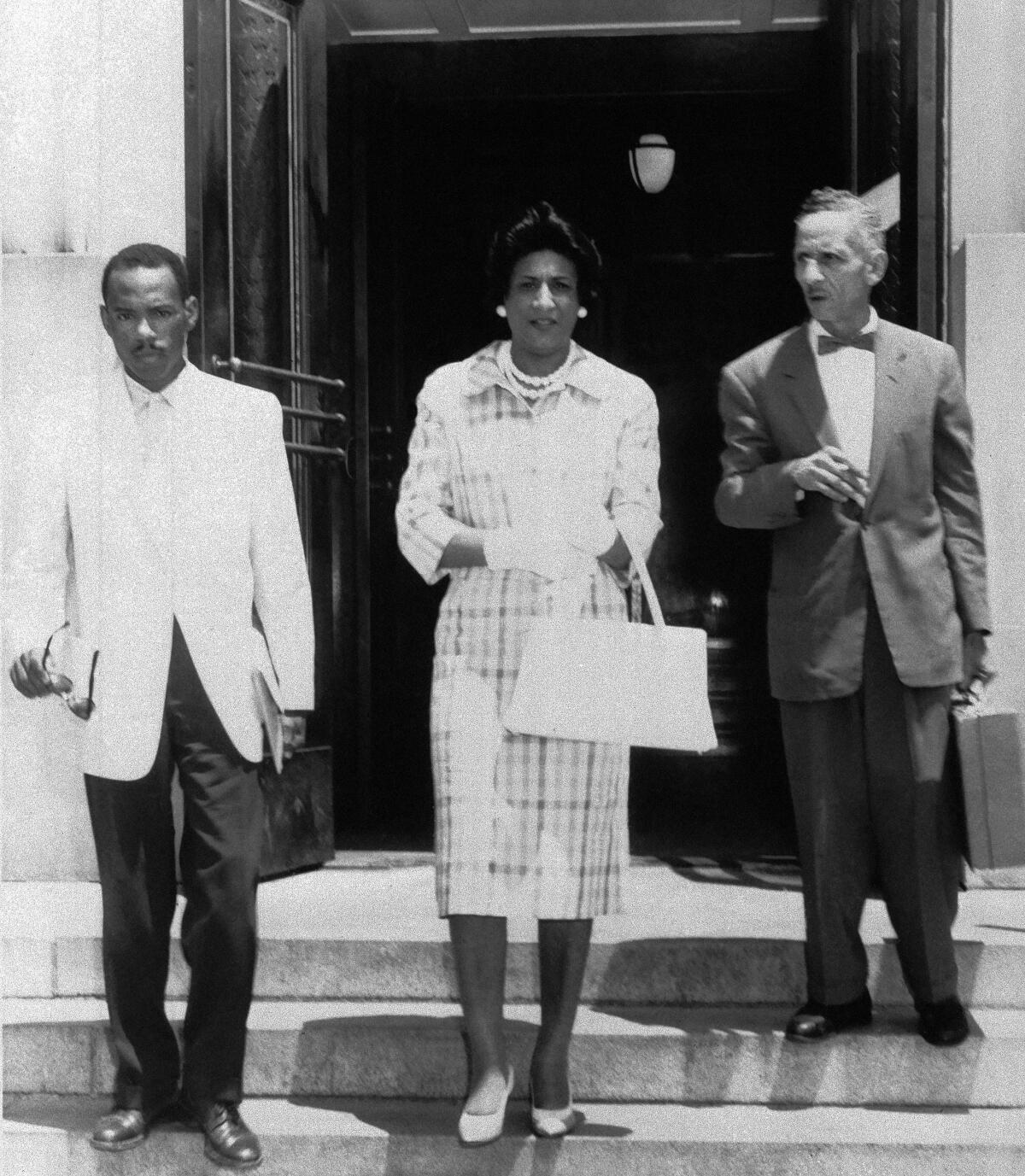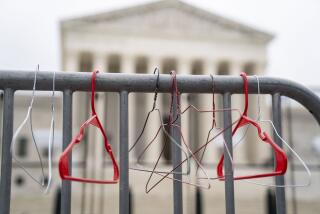Op-Ed: Nominate the ‘most qualified’ woman? Reagan certainly didn’t

- Share via
During his 1980 presidential campaign, Ronald Reagan promised that “one of the first Supreme Court vacancies in my administration will be filled by the most qualified woman I can possibly find.” In 1981, after he entered the White House, he said he “identified such a person” in Sandra Day O’Connor.
What it means to be “the most qualified,” in Reagan’s words, is a question that looms large again because of President Biden’s campaign promise to appoint a Black woman to the Supreme Court. He has nominated Judge Ketanji Brown Jackson for the position that will be vacated when Justice Stephen G. Breyer, for whom she clerked, retires.
At the time that O’Connor was nominated, she had no federal judicial experience and scant appellate experience. She graduated with a B.A. in economics and at the top of her Stanford Law School class. When she left Stanford, she was unable to secure a paid position and began working as a volunteer for the San Mateo County attorney’s office in California. She later served for four years as the assistant attorney general of Arizona. O’Connor was appointed to, and subsequently elected to, the Arizona Senate, where she served as majority leader. She was elected to the Maricopa County State Superior Court in 1975, then appointed to the Arizona Court of Appeals in 1979. Less than two years later, she was nominated to sit on the U.S. Supreme Court.
In other words, she had some experience as a prosecutor, quite a bit as a politician, and a few years on the state judiciary.
So was O’Connor really “the most qualified woman” whom Reagan could find? Not if we consider objective, non-political credentials.
At the time of Reagan’s campaign promise, there was another, much more qualified female candidate available by objective standards. Judge Constance Baker Motley was arguably the most qualified female jurist at the time — particularly for a Supreme Court seat. Motley received her B.A. in economics from New York University. She received her law degree from Columbia Law School in 1946. She was the first African American woman to argue before the U.S. Supreme Court, winning nine of 10 cases she brought there. Motley also wrote the principal brief in one of the most important cases ever argued before the court, Brown vs. Board of Education.
She was elected to the New York State Senate in 1964. Two years later, she was appointed to the U.S. District Court for the Southern District of New York. By 1981, she had been on the federal bench for 15 years.
Motley’s winning percentage before the Supreme Court bests even that of Justice Ruth Bader Ginsburg, who won five of the six Supreme Court cases she argued. How was she not deemed “the most qualified woman” for the Supreme Court in 1981?
This is not to say that O’Connor wasn’t qualified. She was. But this stands as a clear reminder that “most qualified” may be in the eye of the beholder.
O’Connor had something other than qualification working in her favor. Unlike Motley, O’Connor was a Republican. So when Reagan overlooked Motley to name the first female justice on the Supreme Court, political affiliation played a greater role than work experience.
Biden’s nominee, Ketanji Brown Jackson of the U.S. Court of Appeals for the District of Columbia Circuit, will probably be confirmed. She has impressive educational, legal, governmental and judicial credentials. By any metric, Jackson is extremely well-qualified. She has more judicial experience upon nomination than the combined prior judicial experience of Justices John G. Roberts Jr., Clarence Thomas, Elena Kagan and Amy Coney Barrett when they were nominated. She has wide trial and governmental expertise. She has already been confirmed by the Senate for three positions.
Like Reagan, Biden promised to give the Supreme Court the most qualified woman available. He was not bound by any objective criteria, and “most qualified” was the president’s assessment alone to make.
From the very beginning of this country, the Constitution has placed the nominating decision for a given Supreme Court seat entirely in the hands of the president. It will be the Senate’s job to either support or reject the choice. There are no age restrictions (unlike members of Congress and the president), no educational requirements (you don’t have to be a lawyer) and no citizenship restrictions.
Like five current members of the court, Jackson was a judicial law clerk for a Supreme Court justice. Unlike any of the others, she has served as a public defender, bringing that experience to the ideal of “equal justice under law,” the phrase above the entrance to the Supreme Court.
Jackson’s life is a story of exceptional achievement. Although only Biden’s opinion counts when it comes to whether she is “the most qualified” Black woman, she is certainly well-qualified for the Supreme Court by any relevant criteria.
I like to think that somewhere Constance Baker Motley, who died in 2005, is celebrating.
Meg Penrose is a professor of constitutional law at Texas A&M School of Law.
More to Read
A cure for the common opinion
Get thought-provoking perspectives with our weekly newsletter.
You may occasionally receive promotional content from the Los Angeles Times.










